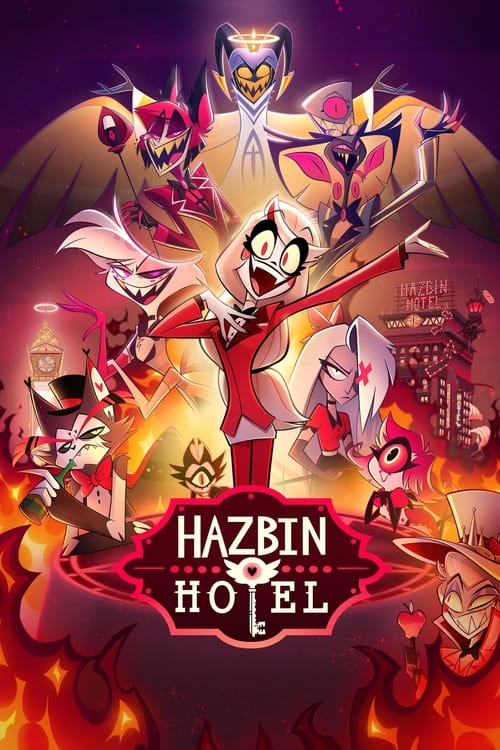
Ask Your Own Question
What is the plot?
Sorry, we aren't able to watch and write up a full detailed plot yet. Check back in a few days.
Related Titles
Browse All Titles →
What is the ending?
The ending of "Anpan" Season 1, Episode 33, centers on Nobu and Takashi (Taka) reconnecting emotionally despite their struggles, highlighting their deep bond and love. The episode closes with a tender moment where Taka hums the "Anpanman March," symbolizing hope and renewal, and Nobu reading "Anpanman" to children, signifying the continuation of dreams and kindness.
Expanded narrative of the ending scene by scene:
The episode opens with Kentaro noticing a souvenir that Taka cherishes in his room, which triggers concern about Taka's emotional state and their separation. This sets the tone of longing and missed connections between Nobu and Taka.
As the story progresses, Nobu and Taka find themselves missing each other again, underscoring the emotional distance and challenges they face. Despite this, their love remains a strong undercurrent.
In the culminating scenes, Taka asks Nobu, "Can you tell me what I can do for you?" Nobu responds, "Sing me my favorite song." Taka hums the "Anpanman March," a song that had previously been rejected but now carries new meaning. Nobu encourages him, "Let's start again from the beginning. The lyrics you originally wrote are good," prompting Taka to sing the "Anpanman March" with the heartfelt lyrics "Even if life ends."
The scene then shifts to Nobu reading the "Anpanman" story to children, symbolizing nurturing and hope. Taku arrives, and the children excitedly gather around him, calling him "Anpanman's teacher." Taku thanks the children for loving Anpanman and joins them in singing the "Anpanman March."
Nobu watches this with tears in her eyes, murmuring, "Anpanman, you're such a kind person, go and protect everyone's dreams," reflecting the theme of kindness and protection.
The final visual shows Nobu and Taka walking side by side, hand in hand. Nobu says, "Taka is our Anpanman," affirming Taka's role as a protector and symbol of hope. The camera pans to the sky where a cloud shaped like Anpanman floats, and the narrator states, "Anpanman is flying somewhere in the sky today as well," closing the story on a note of enduring hope and continuity.
Regarding the fate of the main characters at the end:
- Nobu and Taka remain deeply connected, walking forward together, symbolizing their enduring love and mutual support despite past hardships.
- Taku continues his role as a teacher and guardian figure to the children, embodying the spirit of Anpanman.
- The children represent the future, inspired and protected by the kindness symbolized by Anpanman.
This ending emphasizes themes of love, hope, renewal, and the power of kindness to protect and inspire future generations. It leaves the story open to the continuation of these values beyond the immediate narrative.
Is there a post-credit scene?
I don't have information available about a post-credit scene in Episode 33 of Anpan Season 1. The search results provided do not contain specific details about Episode 33's content or whether it includes a post-credit scene.
To get accurate information about this particular episode, you would need to watch the episode directly or consult episode-specific reviews or recaps from Japanese drama databases or fan communities that cover Anpan in detail.
What happens between Nobu and Takashi in Episode 33 of Anpan?
In Episode 33 of Anpan, Nobu and Takashi experience a disagreement over a souvenir that Takashi brought for Nobu. The conflict arises when Nobu misunderstands Takashi's intentions, leading to a tense exchange that highlights their emotional distance and unresolved feelings. The scene is emotionally charged, with both characters struggling to express their true emotions, ultimately revealing the depth of their connection and the challenges they face in communicating with each other.
How are Chihiro's feelings for Nobu revealed in Episode 33?
In Episode 33, Chihiro's feelings for Nobu are revealed through a heartfelt scene where Chihiro confides in a close friend about his growing affection for Nobu. The revelation is portrayed as bittersweet and heartbreaking, as Chihiro acknowledges that his feelings may not be reciprocated. The emotional weight of the moment is emphasized by Chihiro's vulnerability and the subtle visual cues that underscore his inner turmoil.
What role does Meiko play in Episode 33, and how does her relationship with Ken-chan develop?
In Episode 33, Meiko's affection for Ken-chan becomes increasingly evident as she supports him through a personal challenge. Her actions and subtle gestures--such as offering words of encouragement and showing concern for his well-being--highlight her growing attachment. The episode portrays Meiko's feelings as both obvious and tender, with her interactions with Ken-chan marked by warmth and a quiet longing.
How does the beach reconciliation scene between Nobu, Takashi, Kentaro, and Meiko unfold in Episode 33?
In Episode 33, Kentaro and Meiko take Nobu and Takashi to the beach in an attempt to reconcile their differences. The scene is filled with emotional tension as the group confronts unresolved issues, leading to heartfelt conversations and moments of vulnerability. The beach setting provides a backdrop for both conflict and connection, as the characters navigate their relationships and strive to mend their bonds.
What is the significance of the souvenir in the conflict between Nobu and Takashi in Episode 33?
The souvenir in Episode 33 serves as a catalyst for the conflict between Nobu and Takashi. Takashi brings the souvenir as a gesture of goodwill, but Nobu misinterprets its meaning, leading to a misunderstanding that escalates into a heated argument. The souvenir symbolizes the gap in their communication and the emotional distance between them, making it a pivotal element in the episode's plot.
Is this family friendly?
Anpan, Season 1, Episode 33 is generally family friendly, consistent with the tone of the NHK Asadora series, which is designed for broad audiences including children and older viewers. The episode maintains a warm, heartfelt atmosphere focused on everyday life, relationships, and personal growth.
That said, there may be moments that could be mildly upsetting for very young children or sensitive viewers. These include brief scenes depicting emotional distress, such as characters expressing sadness or anxiety, and subtle references to past hardships or loss. There are no graphic or violent scenes, but the emotional weight of certain conversations or situations might evoke mild sadness. The episode does not contain explicit language, frightening imagery, or mature themes, but parents may wish to preview if their children are particularly sensitive to emotional storytelling.


































